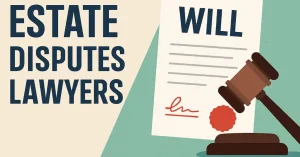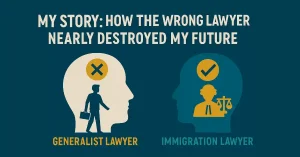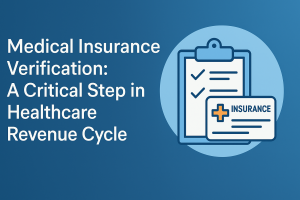You have probably heard terms such as restricted and non-restricted. You may hear that, especially if you sat around with a group of hunters, competitive shooters, or even just folks who enjoy talking about gear. But these terms are not just gun-shop jargon.
In Canada, these words carry serious legal weight, and getting them mixed up could land you in trouble faster than you can say “Possession and Acquisition Licence.”
The way Canada treats firearms is a little like the way it treats alcohol sales. Firearms are regulated, layered, and occasionally confusing. The Firearms Act and the Criminal Code set the rules, and the RCMP’s Canadian Firearms Program enforces them.
Whether you’re a farmer with a shotgun or a sport shooter with a handgun, knowing which category your firearm belongs to is step one to staying legal.
The Basics, Without the Boring Bits
You can own a gun in Canada if you have a licence. There are two licenses with corresponding rights granted to you. The first one is called the PAL (Possession and Acquisition License). If your plans involve anything on the restricted list, you’ll need the RPAL.
Both require safety courses, background checks, and a dose of patience while you wait for the paperwork.
Now here’s the dividing line:
- Non-restricted firearms are what most people picture when they think about hunting rifles or shotguns. They got longer barrels. They are built for things like deer season or target shooting in the back forty. They don’t need special travel permits within the country, as long as you follow storage rules.
- Restricted firearms are highly regulated. Think of some handguns, rifles, and shotguns with shorter barrels. These can’t just be tossed in a case and taken anywhere. You will need official permission to transport them, usually directly to an approved shooting range or a gunsmith.
Non-Restricted: The Workhorses
A pump-action shotgun with a barrel over 18.5 inches? That’s non-restricted. A bolt-action hunting rifle? Same deal. They’re designed for practical purposes — hunting, sport, maybe predator control on a farm.
But “easy” doesn’t mean “anything goes.” The law says they must be stored unloaded. It should either be locked in a secure cabinet or made inoperable with a locking device. Ammunition should also be stored separately or locked up.
When transporting, they have to be unloaded, though you don’t need a special transport permit unless crossing certain boundaries or hunting in regulated areas.
Restricted: The Specialists
This category covers most handguns with barrels 105 mm or longer, as well as certain semi-automatic centre-fire rifles or shotguns with barrels shorter than 470 mm. It also includes firearms that can be fired when under 660 mm.
Unlike non-restricted firearms, you can’t use these for hunting unless you fall under specific exceptions, such as Indigenous hunting rights. Most owners are sport shooters who use them at certified ranges.
And before you even toss one in your range bag, you’ll need an Authorization to Transport (ATT). Even then, the rules for storage and travel are strict: unloaded, locked with a trigger or cable lock, and put inside a container.
Getting Licensed
The following are the steps to get your non-restricted firearms licensed.
- Non-restricted ownership starts with the Canadian Firearms Safety Course (CFSC).
- Pass the tests.
- Apply for your PAL.
- Survive the waiting period and background checks, and you’re in business.
On the other hand, restricted ownership adds more requirements, such as:
- The Canadian Restricted Firearms Safety Course (CRFSC)
- RPAL application
- Extra documentation about why you want the gun (usually for target shooting)
- The waiting period applies here, too
Why the Classification Matters
It’s more than a label on your registration paperwork. A hunter with a non-restricted rifle has far more freedom to head into the bush than a handgun owner, who’s tied to range schedules and permits. The rules shape how and where you can shoot, how you store your gear, and what kind of licence you need to keep it legal.
And here’s the kicker — those rules can change. There is a reclassification of non-restricted firearms. Owners found themselves suddenly in possession of something they couldn’t legally use or transport.
What Happens If You Get It Wrong?
Here’s the part too many folks gloss over. Canada’s firearm laws have teeth. Improper storage, carrying without the right licence, or moving a restricted firearm without an ATT can get you fined. Not only that, but any of the acts can have your guns seized. You can even face criminal charges that come with jail time.
If you’ve been charged, or even if you’re under investigation, don’t wait — get legal help for restricted and non-restricted firearms charges early. Truth be told, the difference between a fine and a criminal record sometimes comes down to what you do in those first few days.
And yes, that’s a solid reason to book a consultation with a criminal defence lawyer before making statements or handing over documents.
Keeping Up in a Changing System
Firearm law in Canada changes more than you might expect. A government regulation, a court decision, or an RCMP update can shuffle categories or add new storage requirements. The RCMP’s Firearms Reference Table is worth checking. Renewing your PAL or RPAL before it expires saves last-minute panic.
Bottomline
At the end of the day, whether you’re into waterfowl hunting or punching paper targets, you’ve got to know the legal category your firearm sits in. That knowledge doesn’t just keep you out of court — it makes you a safer, more responsible owner.
Owning a gun in Canada is a regulated right. Meet those conditions, stay updated, and you’ll be able to enjoy your sport or hobby without wondering if you’ve stepped over the legal line.





